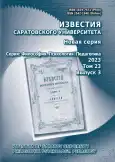The problem of comparative evaluation of paintings created by an artist and generated by a neural network
- Авторлар: Panteleev A.F.1
-
Мекемелер:
- Saratov State University
- Шығарылым: Том 23, № 3 (2023)
- Беттер: 326-330
- Бөлім: Articles
- URL: https://journals.rcsi.science/1819-7671/article/view/250997
- DOI: https://doi.org/10.18500/1819-7671-2023-23-3-326-330
- EDN: https://elibrary.ru/QFUZHO
- ID: 250997
Дәйексөз келтіру
Толық мәтін
Аннотация
Негізгі сөздер
Авторлар туралы
Alexander Panteleev
Saratov State University83, Astrakhanskaya str., Saratov, 410002, Russia
Әдебиет тізімі
- Визильтер Ю. В. «Сильный» искусственный интеллект – наследник человечества. Часть 1 // Научная Россия. Вып. 29.01.2020. URL: https://scientificrussiaru/articles/silnyj-iskusstvennyj-intellekt-naslednikchelovechestva (дата обращения: 05.02.2023).
- Мережковский Д. С. Воскресшие боги Леонардо да-Винчи. М. : Художественная литература, 1990. 640 с.
- Мандельштам О. Э. Полное собрание поэзии и прозы в одном томе. М. : Альфа-книга, 2017. 1182 с.
- Smallwood J., Schooler J. W. The science of mind wandering: empirically navigating the stream of consciousness // Annual Review of Psychology. 2015. Vol. 66. P. 487–518.
- Бернштейн Н. А. О построении движений. М. : Медгиз, 1947. 254 с.
- Фрейд 3. Художник и фантазирование. М. : Республика, 1995. 400 с.
- Рубинштейн С. Л. Основы общей психологии. СПб. : Питер, 2006. 235 с.
- Доблаев Л. П. Смысловая структура учебного текста и проблемы его понимания. М. : Педагогика, 1982. 176 с.
- Матюшкин А. М. Психология мышления. Мышление как разрешение проблемных ситуаций : учебное пособие. М. : КДУ, 2009. 190 с.
- ГуроваЛ. Л. Психологический анализ решения задач. Воронеж : Издательство Воронежского университета, 1976. 327 с.
- Uittenhove K., Jeanneret S.,Vergauwe E. From LabTesting to Web-Testing in Cognitive Research: Who You Test is More Important than how You Test // Journal of Cognition. 2023. Vol. 6, iss. 1. P. 1–17. https://doi.org/10.5334/joc.259
- Gangadharbatla H. The Role of AI Attribution Knowledge in the Evaluation of Artwork // Empirical Studies of the Arts. 2021. Vol. 40, iss. 2. P. 125–142. https://doi.org/10.1177/0276237421994697
- Лотман Ю. М. О природе искусства // Ю. М. Лотман и тартусско-московская семиотическая школа. М. : Гнозис, 1994. С. 432–438.
Қосымша файлдар









